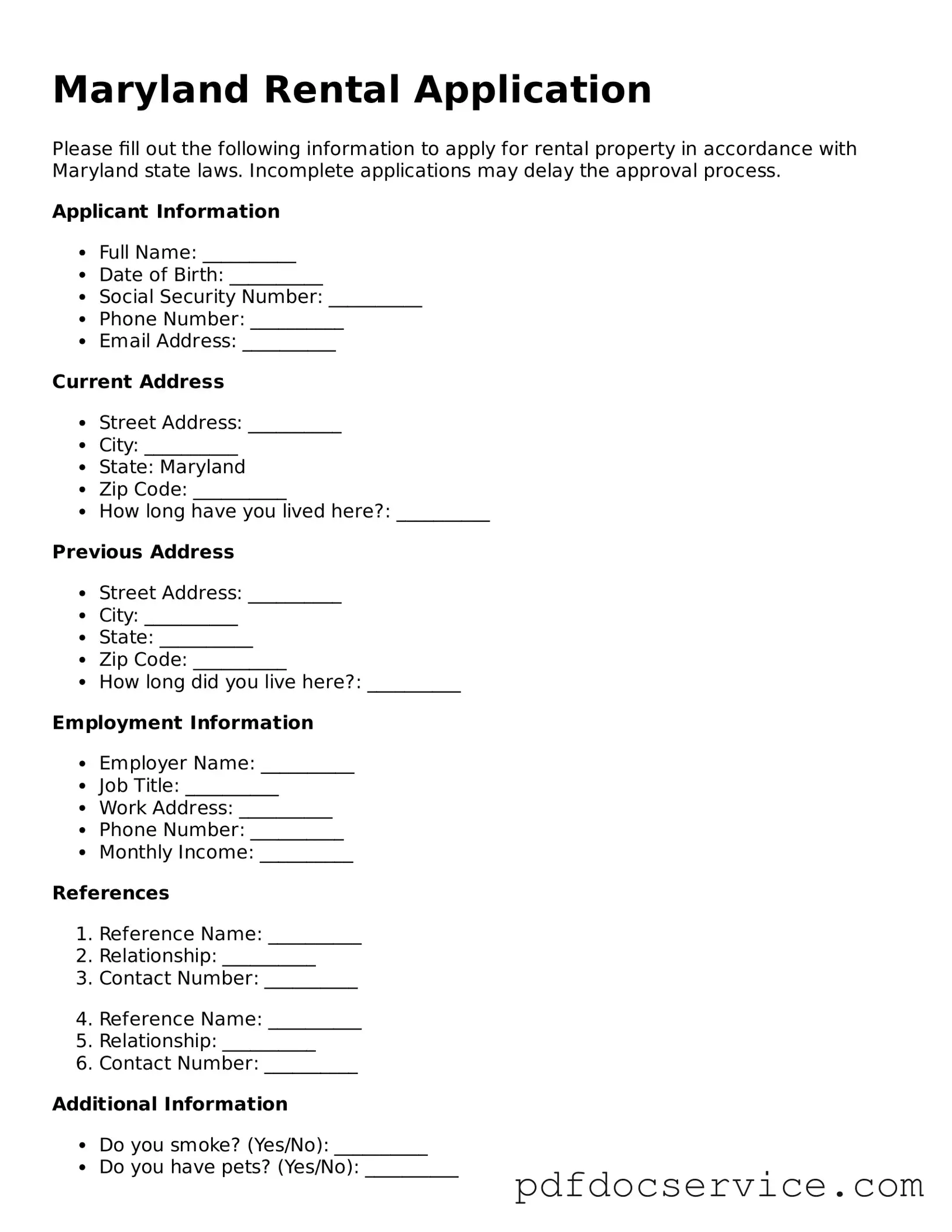The Maryland Rental Application form is a document used by landlords to collect information from potential tenants. It typically includes personal details, rental history, employment information, and references. This form helps landlords assess the suitability of applicants for their rental properties.
Why do I need to fill out a rental application?
Filling out a rental application is essential for several reasons:
-
It allows landlords to verify your identity and background.
-
It helps landlords evaluate your rental history and financial stability.
-
It provides a basis for making informed decisions about potential tenants.
A typical Maryland Rental Application form requires the following information:
-
Personal details: name, address, phone number, and email.
-
Social Security number or other identification.
-
Employment history: current and previous jobs, including employer contact information.
-
Rental history: previous addresses, landlord contact details, and duration of stay.
-
References: personal or professional contacts who can vouch for you.
Is there a fee to apply?
Many landlords charge an application fee to cover the cost of background checks and processing the application. This fee can vary, so it’s important to ask the landlord or property manager about the amount before submitting your application.
How long does the application process take?
The application process can take anywhere from a few days to a week, depending on the landlord's procedures and the thoroughness of background checks. It’s advisable to follow up if you haven’t heard back within a week.
Can I be denied rental based on my application?
Yes, landlords can deny rental applications for various reasons, including poor credit history, insufficient income, or negative rental history. However, they must comply with fair housing laws and cannot discriminate based on race, color, religion, sex, national origin, familial status, or disability.
What should I do if my application is denied?
If your application is denied, the landlord is required to provide a reason. You can ask for clarification and, if applicable, request a copy of your credit report. If you believe the denial was unjust, you may consider discussing it further with the landlord or seeking advice from a housing advocate.
Can I appeal a denial?
While there is no formal appeal process for rental applications, you can communicate directly with the landlord to discuss the reasons for the denial. Providing additional information or correcting any misunderstandings may help in reconsidering your application.
